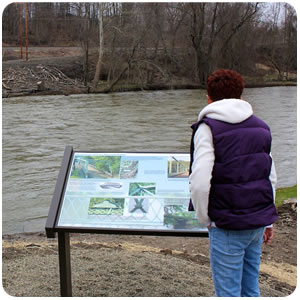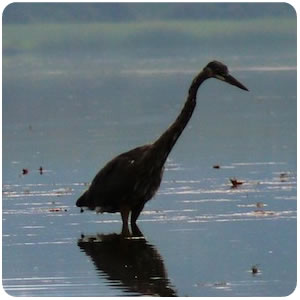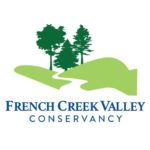Hiking, Biking, Geocaching, Birding, Hunting
Hike, Bike, Wildlife Watch
 Opportunities for hiking and wildlife watching are available throughout the watershed on state and federal lands, with most offering cleared, marked trails to facilitate access. Touring roads cross the length and width of the watershed, and Ernst Trail, Tour de Tamarack and Spillway Trail are dedicated to biking and hiking.
Opportunities for hiking and wildlife watching are available throughout the watershed on state and federal lands, with most offering cleared, marked trails to facilitate access. Touring roads cross the length and width of the watershed, and Ernst Trail, Tour de Tamarack and Spillway Trail are dedicated to biking and hiking.
- Ernst Trail Association
- The Allegheny Valley Trails Association
- Erie National Wildlife Refuge
- Bossard Nature Trail
- Pennsylvania Game Commission
Tourism Information
Birding
 The watershed is located near the convergence of the Atlantic Coast and Mississippi River flyways, major routes for songbirds and waterfowl migrating from northeastern U.S. and Canada to the Gulf of Mexico. This location, combined with the sheer diversity of habitats that include wetlands, streams, lakes, meadows and forested regions, creates ample, year-round birding opportunities. Cussewago Bottom, Hemlock Hill Research Area, Erie National Wildlife Refuge and Conneaut Marsh are designated Important Bird Areas by the Audubon Society.
The watershed is located near the convergence of the Atlantic Coast and Mississippi River flyways, major routes for songbirds and waterfowl migrating from northeastern U.S. and Canada to the Gulf of Mexico. This location, combined with the sheer diversity of habitats that include wetlands, streams, lakes, meadows and forested regions, creates ample, year-round birding opportunities. Cussewago Bottom, Hemlock Hill Research Area, Erie National Wildlife Refuge and Conneaut Marsh are designated Important Bird Areas by the Audubon Society.
Important Bird Areas
The National Audubon Society has designated four Important Bird Areas (IBAs) within the watershed: Cussewago Bottom, spanning the area from Meadville to the headwaters of the stream, the Erie National Wildlife Refuge, located in Crawford County south of Cambridge Springs, the Hemlock Hill Research Area, adjacent to the ENWR, and Conneaut (Geneva) Marsh.
These areas are sites of special significance that can be distinguished from surrounding areas, and are specifically managed for the benefit of birds or other wildlife. The watershed’s IBAs encompass high-quality wetlands, bottomland, mixed hardwood forests and open field habitats supporting more than two hundred species of songbirds, shorebirds, migratory waterfowl and raptors. State endangered species living and nesting in the IBAs include Black Bitterns (Ixobruchus dubius), American Bitterns (Botaurus lentiginosus), and Least Bitterns (Ixobruchus exilis), as well as Bald Eagles (Haliaeetus leucocephalus).
Hunting
The abundant and diverse wildlife habitats that characterize the watershed provide fine opportunities for hunting. The region is replete with second growth hardwood forests, meadows and brushy edges, conifer thickets, wetlands and croplands. Deer and turkey are the principal big game species sought by hunters, and these are complemented by an array of upland birds and small game species, as well as migratory waterfowl hunting in the watershed’s wetlands.
French Creek Valley Conservancy has a number of properties that are open for hunting. The Pennsylvania Game Commission owns approximately 21,340 acres on 25 state game land properties in the French Creek Watershed that are open to public hunting. The Erie National Wildlife Refuge consists of 8,800 acres of land located in two parcels, one in the Muddy Creek sub-basin near Cambridge Springs, and the other straddling the Sugar and Woodcock Creek sub-basins east of Meadville. These are the largest tracts of publicly owned land in the watershed, and are open to public hunting in designated areas.


